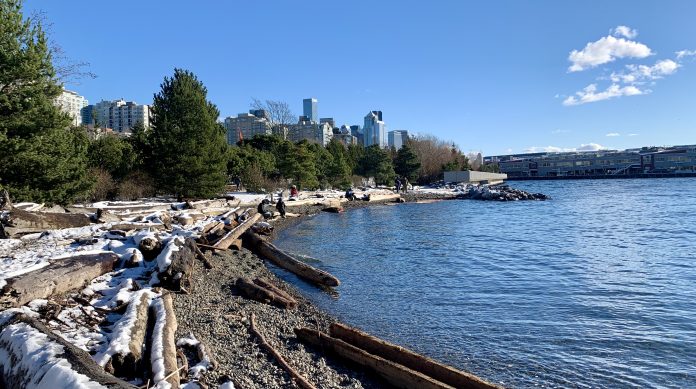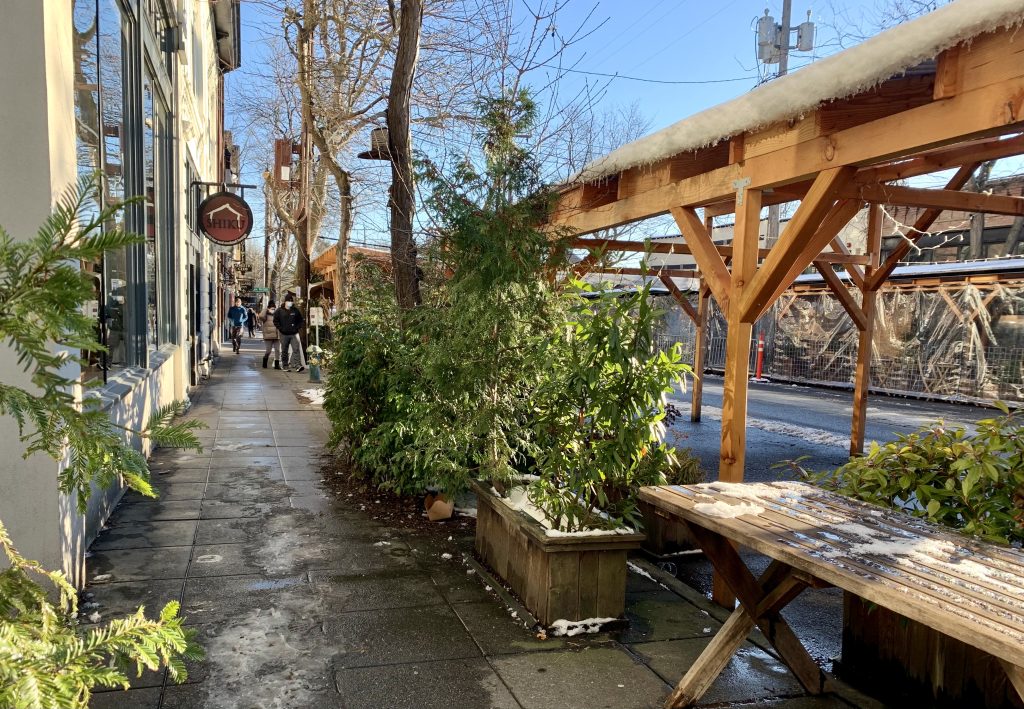It’s always been fashionable to complain. Complaining is often easy and it can be cathartic too. But since the beginning of the Covid pandemic, at times it can feel inappropriate to do anything but complain. Maybe like me you’ve censored yourself when you have something positive to share because you don’t want your happiness to be triggering to people around you who may be experiencing stress or grief. Or perhaps you’ve listened to someone gripe about having their Alaskan cruise cancelled and thought, well shouldn’t you be at least a little grateful to be safe, healthy, and not trapped on a boat with hundreds of sneezing people? To be sure, many people have good reasons to complain. Seattle parents, for example, won’t be able to take their children to public school this Monday, and if positive Covid test results conducted by the district for students staff turn out to be high, they may be plunged back into the stressful world of remote learning. Throughout 2021, others have lost loved ones, struggled with unemployment, or greeted everyday with only a vague idea of where they will sleep that night.
The New Year is a good time to take stock of where things stand in life. The bad — and the good, too. At The Urbanist, as we reflect back on 2021, we have to admit that in addition to our complaints — and there were lots of them — there were many positive developments in Seattle metro area and beyond that we could feel grateful for, even celebrate. After all, it was not so long ago that some pundits were prophesying the end of cities, but now, no one doubts that people will continue to want to live in cities because when done right, cities can provide a level of quality of life that sprawling suburbs or remote rural areas simply cannot. So we can all be grateful that just as they survived the Bubonic Plague, cholera, and the 1918 flu, cities will outlive Covid, and they will outlive us, too.
But it’s also undeniable that we continue to make room for far too many cars in our cities. That’s why one of the top things the gang at The Urbanist was grateful for in 2021 was the expansion of light rail in the Puget Sound region. With the opening of the Northgate extension, Seattle saw three new Link light rail stations open. This year Tacoma will see the opening of the Hilltop Link extension, adding seven new stations to the Tacoma streetcar line. Then in 2023, the Eastlink will inaugurate 14 miles of track and 10 new stations connecting Seattle, Bellevue, and Redmond. 2024 will see the addition of the Federal Way extension, bringing light rail from its current terminus at Angle Lake to the Federal Way Transit Center, and the Lynnwood extension, adding 8.5 miles of track and four near new stations. In two years, many new light rail options will available — and planning for West Seattle to Ballard and Everett light rail projects will be moving ahead. This is exciting, transformative work — and we are very grateful that it is advancing forward.
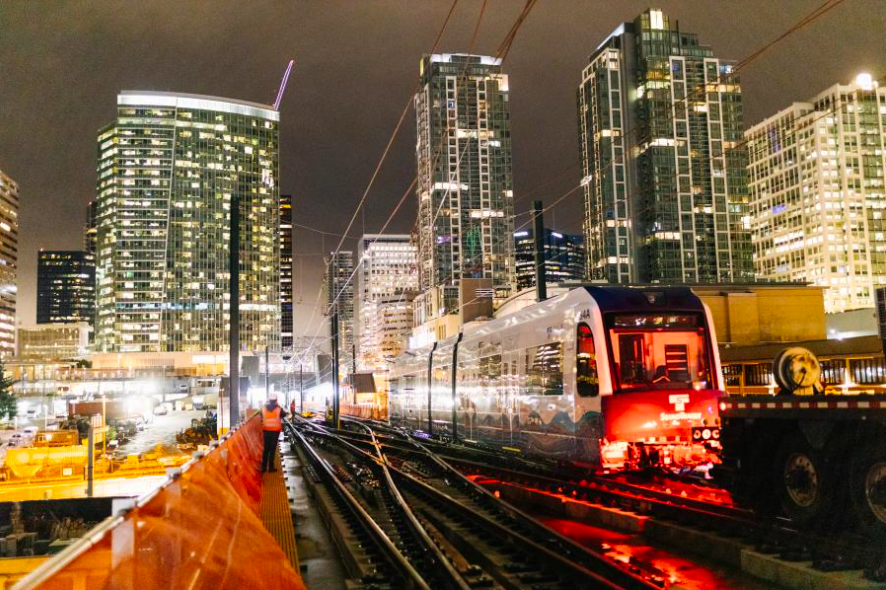
Another major development that came into being throughout 2021 was the repurposing of right of way for people. Yes, 2020 can viewed as the year when suddenly street space that had previously been relegated to cars was suddenly viewed as a resource for people to use in creative ways, but 2021 was the year in which it became impossible to imagine people-focused Stay Healthy and Café streets returned to car traffic. More progress needs to be made on this front, but take a peek back at a pre-pandemic PARK(ing) Day to get a sense of how much we’ve achieved. The outdoor eateries that can be found in what were once parking spaces are getting easier and easier to take for granted — and that’s a good thing. The more we take for granted the idea that we can use right of way for people, not cars, the farther we will have come.
Just as we are beginning to rethink the use of right of way, in Seattle, Tacoma, and perhaps some other Puget Sound cities as well, people are beginning to think differently about residential zoning. Tacoma passed Home in Tacoma, which while not perfect, will make it possible to create duplexes, triplexes, and other kinds of missing middle housing throughout the city. In Seattle, steps made toward relaxing onerous restrictions on daycares and renaming single family zoning as neighborhood residential, represent more steps in the right direction. There also appears to be brand support for these changes. A survey conducted by EMC Research for the Seattle Chamber of Commerce found 62% of respondents supported changing regulations to allow for more density in single family zones. While the steps taken in 2021 maybe small, let’s hope that they represent the beginning of a longer journey toward adapting our zoning codes to permit the housing affordability and choices our cities need.
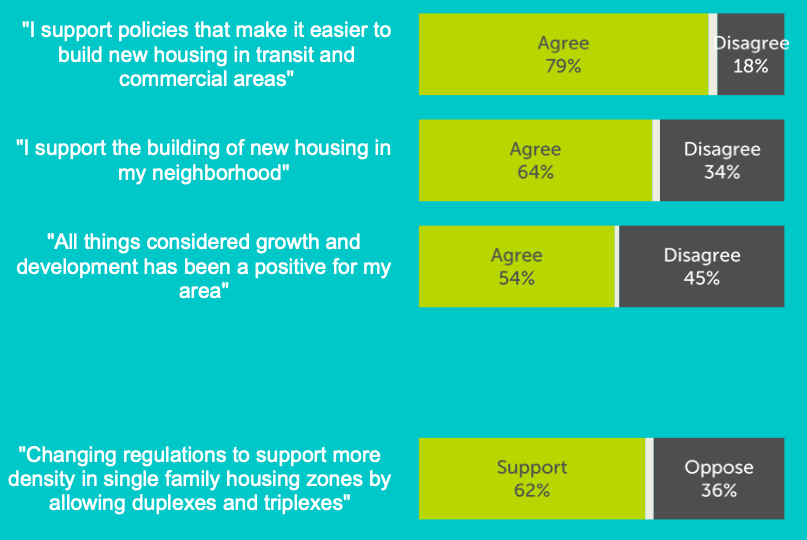
As powerful as zoning can be, the breadth and extent of the housing affordability crisis in the Seattle area demands increased investment in social housing. We can be grateful this year that the City of Seattle was able to invest $143 million in affordable housing, the City’s largest single year investment and a 20% increase over the previous record in 2020. Much of these funds came from Mandatory Housing Affordability (MHA) and the JumpStart payroll tax. The Urbanist is grateful that we were able to pass these tools for raising revenue for affordable housing and looks forward to seeing them continue to perform in the years to come.
We are also grateful for the fact that some of these funds have been used to purchase existing or recently completed market-rate apartment buildings, bringing affordable housing online quickly in a time of great need. Just this week, the Low Income Housing Institute (LIHI) announced that it had acquired another apartment building, Squire Park Plaza, which will bring 60 affordable homes to the Seattle’s Central District. This latest purchase comes on the heels of several building acquisitions that occurred throughout 2021 which created safe, permanent homes.
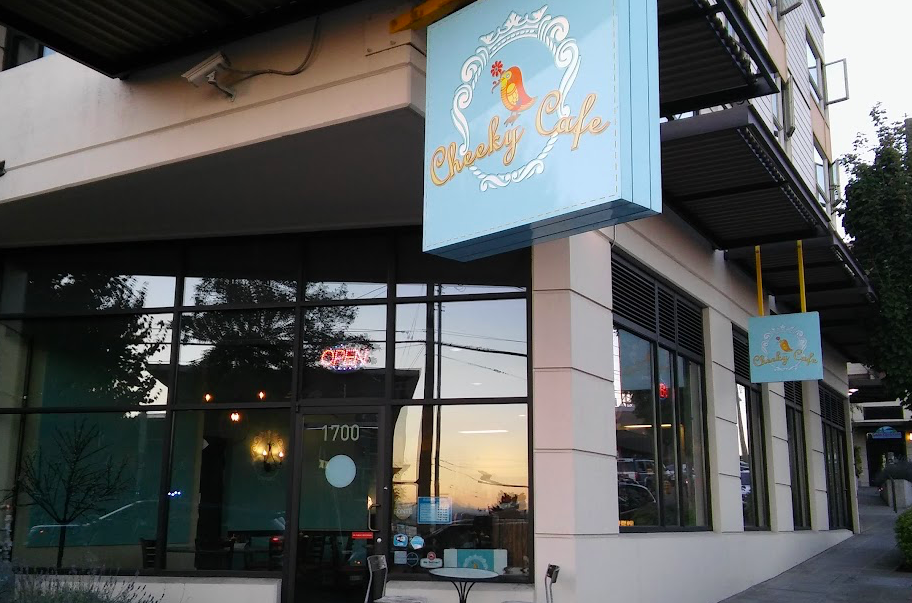
In addition to making gains on the creation of affordable housing, in 2021 Seattle also saw its bike network expand at the fastest rate since the passage of the Move Seattle Levy in 2015. 34 projects from the City’s Bicycle Master Plan were implemented in 2021, most of them new bike facilities. At The Urbanist, we are grateful to be biking on more protected bike lanes and to have more safe intersections to cross through.
We are also grateful for the e-bike boom that is flattening Seattle’s hills and inspiring more people across the region to choose biking for daily transportation. I personally joined the e-bike crowd this past summer, and it has made it possible for me to travel anywhere in the city on bike (relatively) easily. When it comes to be electrification of transportation, e-bikes, scooters, and other small devices can replace many trips currently made by cars. It is gratifying to see new technology offer real mobility solutions that can improve people’s lives affordably. Prices for e-bikes are much more accessible than they were even a couple years ago, and it is now possible to get a quality e-bike on a budget. We were heartened to see e-bikes included in Governor Inslee’s new electric vehicle rebate proposal.
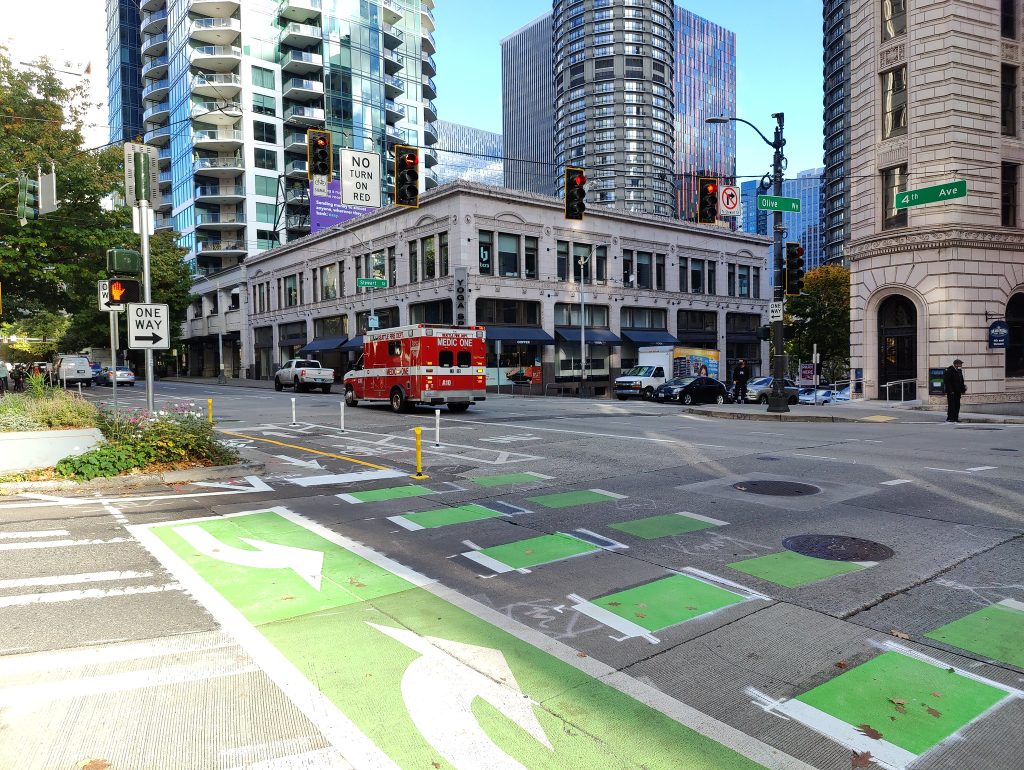
To wrap things up, when I sent out the question of what we were grateful for in 2021, one of the first responses I received was from Reporter Ray Dubicki, who mentioned feeling grateful for the neighborhood businesses that know him by name. That feeling of living in community is something that I, and other members of The Urbanist, feel immense gratitude for as well. Throughout the highs and lows of 2021, we are grateful to have been able to share this year with the many people who make our neighborhoods and cities awesome places to live. We are also grateful for our community of volunteers, supporters, and readers. You make all of the writing and advocacy we do at The Urbanist possible.
Natalie Bicknell Argerious (she/her) is a reporter and podcast host at The Urbanist. She previously served as managing editor. A passionate urban explorer since childhood, she loves learning how to make cities more inclusive, vibrant, and environmentally resilient. You can often find her wandering around Seattle's Central District and Capitol Hill with her dogs and cat. Email her at natalie [at] theurbanist [dot] org.

